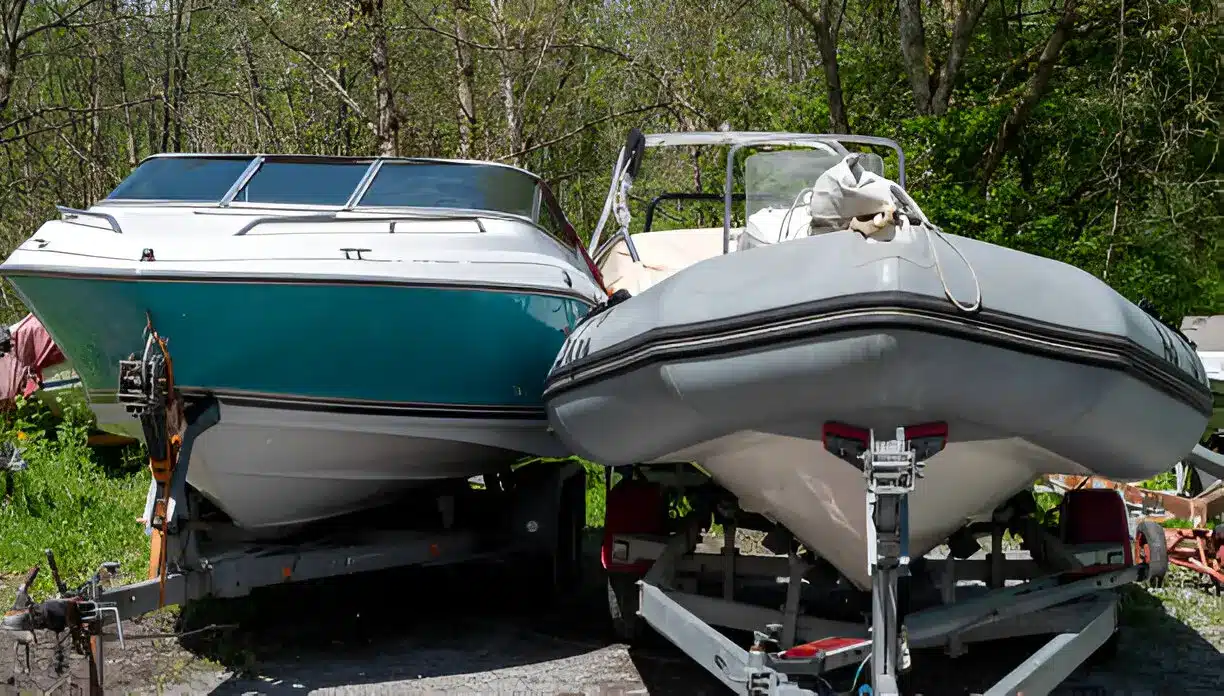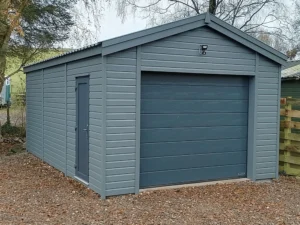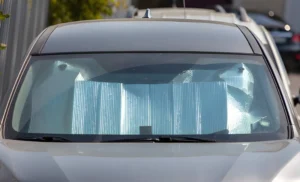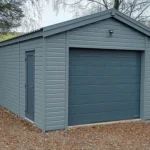Are you thinking about storing your RV or boat together? You’re not the only one. Many people face a tough choice when it comes to storing their vehicles. With more places offering both RV and boat storage, it’s key to know the good and bad sides.
Storing your RV and boat in one place can be convenient and might save you money. But, you should think about security, upkeep, and how easy it is to get to your vehicles. In this article, we’ll look at the ups and downs of storing your RV and boat together. This will help you decide what’s best for you.
Key Takeaways
- Understand the benefits of combined RV and boat storage facilities.
- Learn about the potential challenges of storing your RV and boat together.
- Discover key considerations for making an informed decision about your storage needs.
- Explore the importance of security, maintenance, and accessibility coordinators in combined storage facilities.
- Gain insights into factors that can impact your storage experience.
The Growing Challenge of Recreational Vehicle Storage
Storing your RV or boat can be tough. You have to think about security, maintenance, and how easy it is to get to. With more people using RVs and boats, finding good storage is key.
Common Storage Issues for RV Owners
RV owners struggle with space, security, and upkeep. They need a place that can fit their vehicle and keep it safe.
- Limited storage options in urban areas
- High costs associated with large storage facilities
- Concerns about security and theft
Typical Storage Problems for Boat Owners
Boat owners face similar issues. They need a place that can handle their boat’s size and protect it from the weather.
| Storage Challenge | RV Owners | Boat Owners |
| Space Constraints | High | Very High |
| Security Concerns | High | High |
| Maintenance Requirements | Medium | Medium |
Why Combined Solutions Are Gaining Popularity
More people are looking for ways to store their RVs and boats together. This makes managing and maintaining them easier and can save money. Many owners are now choosing combined storage solutions. It’s a smart way to handle their storage needs.
Key Benefits of Combined RV and Boat Storage
Choosing combined RV and boat storage offers many advantages. It makes managing your vehicles more efficient. You get to enjoy the benefits of simplifying your life.
Potential Cost Savings and Discount
One big plus is the chance to save money. Many places give discounts for storing both vehicles together. This can cut down your costs a lot.
| Storage Type | Average Cost | Discounted Cost (Combined Storage) |
| RV Storage | $150 | $120/month |
| Boat Storage | $100/month | $80/month |
| Total | $250/month | $200/month |
Simplified Management and Maintenance Schedules
Storing your RV and boat together makes upkeep easier. You can do maintenance and checks at the same time. This saves you time and effort.
Space Efficiency for Property Owners
For property owners, combined storage is a space saver. It’s great for those with little room. It lets you use your space better.
Types of RV and Boat Storage Options Available
There are many ways to store your RV or boat. The right choice depends on your needs, like the size of your vehicle and your budget. Your personal preferences also play a big role.
Covered Storage Facilities
Covered storage facilities have a roof and sometimes walls. They protect your RV or boat from the weather. This is great for keeping your vehicle safe from sun, rain, and snow. You can find covered storage indoors or outdoors, with different levels of security and features.
Indoor Climate-Controlled Storage
Indoor climate-controlled storage goes further by keeping a steady temperature and humidity. It’s perfect for valuable RVs and boats. It helps avoid damage from extreme weather and moisture.
Outdoor Storage Solutions
Outdoor storage is often cheaper and works for RVs and boats not used often. But, it offers less protection from the weather. You might need to add extra security measures.
Self-Storage vs Specialized Facilities
Choosing a storage facility means deciding between self-storage and specialized facilities. Self-storage has various unit sizes and is handy for storing other items. Specialized facilities focus on RVs and boats, offering specific services and better security.
Critical Factors to Consider Before Combining Storage
Before you decide to combine your RV and boat storage, it’s essential to consider several critical factors. These will help ensure a smooth and cost-effective solution. Assessing your specific needs will help you determine if a combined storage option is right for you.
Size and Space Requirements for Different Vehicles
The size and space requirements for your RV and boat are crucial. You’ll need to ensure the storage facility can accommodate both vehicles comfortably. This includes their dimensions, weight, and any special requirements.
| Vehicle Type | Average Length | Average Width |
| RV | 20-40 feet | 8-10 feet |
| Boat | 20-30 feet | 8-12 feet |
Access Frequency and Convenience
Access frequency and convenience are also vital factors. If you need to access your RV or boat frequently, choose a storage facility that’s conveniently located. It should also offer flexible access hours.
Seasonal Usage Patterns
Seasonal usage patterns are another important consideration. If you only use your RV or boat during certain times of the year, you may be able to negotiate better rates or storage arrangements during the off-season.
Security and Protection Needs
Security and protection needs should not be overlooked. Look for a storage facility that offers robust security measures. This includes cameras, gated access, and on-site personnel.
By carefully evaluating these factors, you can make an informed decision. This will help you determine if combined RV and boat storage is right for you.
Cost Analysis: Combined vs. Separate Storage Solutions
To get the most out of your storage budget, it’s key to compare costs. You should look at both combined and separate storage solutions. Several factors affect the cost when storing your RV and boat.
Average Price Comparisons Across Regions
The cost of storage changes a lot depending on where you are. Combined storage might save you 10% to 20% compared to separate storage. In the U.S., for example, the monthly cost for storing both your RV and boat can be between $100 and $300. This depends on the location and what’s included.
Hidden Costs and Additional Fees
There are often hidden fees to think about. These can include:
- Security deposits
- Insurance requirements
- Maintenance fees
- Access fees during non-business hours
Long-Term Financial Benefits
While combined storage might save money in the short term, think about the long term too. Storing both your RV and boat in one place can make payments and management easier. This could save you money over time.
By looking at these points and comparing prices, you can choose the best option for your needs and budget.
How to Find the Perfect RV and Boat Storage Facility
Finding a reliable storage facility is key to keeping your RV and boat safe and accessible. You need to look at several important factors. These factors affect the safety and ease of getting to your vehicles.
Essential Amenities and Services
When searching for a storage facility, look for key amenities. These include on-site management, 24/7 security, and climate-controlled units. Some places also offer extra services like maintenance, washing, and detailing.
| Amenity | Description | Importance Level |
| On-site Management | Having staff on-site to monitor the facility | High |
| 24/7 Security | Continuous surveillance and access control | High |
| Climate-Controlled Units | Units that regulate temperature and humidity | Medium |
Strategic Location Considerations
The location of the storage facility is very important. You want it to be close to your home or where you often travel. Think about how easy it is to get to and if it’s near places like fuel stations and repair shops.
Security Features Worth Paying For
Security is a top concern when storing your RV and boat. Look for facilities with advanced security like gated access, CCTV cameras, and on-site security people.
Contract Terms and Policy Review
Before you sign a contract, read it carefully. Know the payment terms, how long you can store your vehicle, and any extra fees. Make sure you understand the facility’s rules on access, maintenance, and insurance.
DIY Solutions for Home-Based RV and Boat Storage
Storing RVs and boats at home needs careful planning. You must think about several important things to protect your vehicles.
Property Requirements and Spatial Planning
Check how much space you have on your property. Make sure it’s big enough for your RV and boat. You also need room for easy access.
- Measure your RV and boat to determine the required storage space.
- Evaluate your property’s layout to identify the most suitable storage location.
- Ensure there’s enough clearance for both vehicles.
Building or Modifying Existing Structures
You might need to build or change existing structures for your RV and boat. This could mean building a new shed or making an old one bigger.
When building or changing structures, keep these tips in mind:
- Choose durable materials that can handle different weather.
- Make sure the structure has good air flow to avoid moisture.
- Plan the structure so you can easily get to your vehicles.
Navigating HOA Rules and Local Regulations
Before starting your DIY project, check with your HOA and local government. Make sure you follow all rules and regulations.
- Look at your HOA’s rules about storing things outside.
- Find out if you need any permits from local authorities.
Weatherproofing and Maintenance Best Practices
To keep your RV and boat safe, use weatherproofing and regular care.
Here are some good practices:
- Use covers to shield your vehicles from the weather.
- Check your vehicles often for damage or wear.
- Do regular maintenance, like cleaning and oiling parts.
Conclusion: Making Your Storage Decision
When deciding between combined RV and boat storage or separate storage, think about what you need. Consider the size of your vehicles, how often you use them, and the seasons. Your choice should match your lifestyle and vehicle needs.
Combined storage can save money and be easier to manage. It’s great for many RV and boat owners. But, if your vehicles have different needs or you want them in separate spots, separate storage might be better.
Look at the security, amenities, and services of storage facilities. Also, check the location and how easy it is to get to. This ensures your RV and boat are safe and secure.
By carefully looking at your options and considering important factors, you can choose the best storage for you. This way, your RV and boat will be safe, protecting your investment and giving you peace of mind.
FAQ
What are the benefits of combining RV and boat storage?
Storing your RV and boat together can save money. It also makes managing and maintaining them easier. Plus, it helps you use your space better.
What types of storage options are available for RVs and boats?
You can choose from covered facilities, indoor climate-controlled storage, or outdoor options. There are also self-storage and specialized facilities available.
How do I determine the right storage solution for my RV and boat?
Think about the size and space you need. Consider how often you’ll use them and the security you require. Also, think about the season you use them most.
What are the key factors to consider when evaluating storage facilities?
Look at the amenities and services they offer. Check the location and security features. Also, review the contract terms carefully.
Can I store my RV and boat at home?
Yes, you can store them at home. But, you need to check your property’s requirements. You also need to plan your space and follow HOA and local rules.
What are the costs associated with combined RV and boat storage?
The cost varies by location, facility, and services. Be aware of hidden costs and extra fees.
How can I ensure my RV and boat are stored securely?
Look for facilities with strong security. They should have surveillance cameras, gated access, and on-site staff.
Also Read-Kickstart Your Tech Career with a Diploma in Information Technology at Sigma










